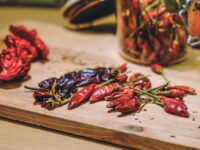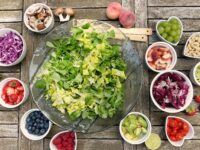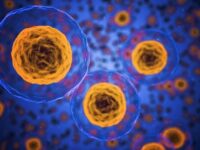Food is often viewed through the lens of cultural dogma — good or bad, healthy or unhealthy — but what scientists have been able to interpret from previous studies is that we may be looking at food’s relative nutrient composition in a bottlenecked way. Certain foods contain varying amounts of macronutrients, vitamins, and minerals, but just because our food is made up of these elements does not mean that every individual who consumes them will utilize the chemical makeup of such food in the same way. The environment and context in which these foods are consumed seems to play an important role in the absorption of such compounds.
A study published in the American Journal of Clinical Nutrition tested iron absorption between two groups of women, one from Thailand and the other from Sweden. When given a meal from the opposite country, as compared to a traditional meal from their native country (keeping iron levels between meals constant), it was found that the women absorbed vastly more iron when they enjoyed the food from their own country. The study also then tested the same women’s iron absorption when divided into two subgroups; one which had the original native meal, and the second group was given that same meal after being blended up into a brownish, clumpy slop. The latter barely absorbed any iron, presumably due to the fact that the meal was not very enjoyable to have.
This is because the process of digestion begins in the brain, not the mouth. When your brain is anticipating and eager to consume foods, it sends signals to your taste receptors, your salivary glands, and down your digestive tract through the vagus nerve, or the gut-brain axis, to begin the production of enzymes which will break down food. The lining of the digestive tract with neurons is known as the enteric nervous system or “second brain” due to its powerful impact on digestion. Additionally, a study published in the Journal of Cellular Physiology found that the neurotransmitters in the brain “regulate and control not only blood flow, but also affect gut motility, nutrient absorption, GI innate immune system, and the microbiome.”
A movement of dieticians who are trained in intuitive eating take into account the role of satisfaction and pleasure in eating. They attempt to understand the influence it has in maintaining a homeostatic energy balance, or eating in the case of an energy deficit rather than for psychosocial reasons. This can be explained by the brain processes that take place during food consumption. Cholecystokinin is a neurotransmitter that is released when we eat. One of its roles is to signal to our brain when we are full or satisfied. It also stimulates pleasure and sends signals to the digestive system to begin the breakdown and absorption of ingested foods — proving the intimate relationship that exists between pleasure, digestion, and satiation.
If the body is in a stressed out state (sympathetic, “fight or flight”), blood flow is directed towards the extremities and away from the digestive organs, making food harder to digest and causing digestive distress.
Additionally, the environment in which food is consumed, the body, is a major contributor in whether or not nutrients are efficiently absorbed. If the body is in a stressed out state (sympathetic, “fight or flight”), blood flow is directed towards the extremities and away from the digestive organs, making food harder to digest and causing digestive distress. This is why taking the time to bring the body into a relaxed and pleasurable state (parasympathetic, “rest and digest”) before eating is important for proper digestion.
It is important to note that the studies referenced are not representative of a causal relationship between pleasure and nutrient absorption, but do prove that our consumption of food is not a simple equation of inputs and outputs. The human body is a complex system and the chemical reactions that occur include many confounding factors — the black and white thinking of food as either physiologically beneficial or psychologically pleasurable is proving to be not entirely accurate. Although concerns among professionals often circulate about the relative pathways that drive the motivation to eat, the hedonistic or homeostatic pathways, people can still find pleasure in what they eat whilst also eating to meet the body’s biological needs. Enjoying your food is not hedonistic, but rather a way to get the most nutritional bang for your buck.
American Journal of Clinical Nutrition (1978). DOI: 10.1093/ajcn/31.8.1403
Flavour Journal (2015). DOI: 10.1186/s13411-014-0029-2
Endocrinology Metabolism Clinics of North America (2008). DOI: 10.1186/s13411-014-0029-2
Journal of Cellular Physiology (2016). DOI: 10.1002/jcp.25518
The Journal of Nutrition (2009). DOI: 10.3945/jn.108.097618American Journal of Physiology (2011). DOI: 10.1152/ajpgi.00387.2010
Image Source: Pixabay






